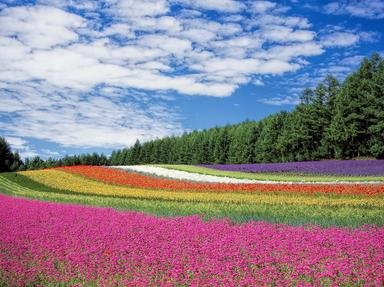Quiz Answer Key and Fun Facts
1. Widely considered one of the earliest examples of sensation fiction, the novel "The Woman in White" was written in 1859 by which English author?
2. The name of what European capital, located at the confluence between the Rivers Danube and Sava, means "white city"?
3. From the Old French for "white food", blancmange is a popular, milk- or cream-based dessert found in different versions throughout Europe. What is the name of a popular Italian version of blancmange?
4. What valuable gemstone, usually associated with another colour, comes in a white variety known as "mutton fat"?
5. The beautiful painting in the photo, called "Symphony in White, No.1", was created in the early 1860s by what eminent American artist - known for his portrait of a close relative?
6. What game bird is the only bird species whose plumage turns white during the winter?
7. Marble has been used since antiquity to create stunning white buildings. However, the Basilica of Sacré-Coeur in Paris was built of what material - a form of limestone highly prized by the Romans?
8. Which of these words denoting sources of light is related to a Latin verb meaning "to shine with white light"?
9. Many plants produce beautiful, sweet-smelling white flowers. One of them is the Arabian jasmine, or sampaguita, which is the national flower of what large Asian island country?
10. Named after a delicious white substance, the influential rock trio Cream made quite a splash in the late Sixties. Which of these famous "white" songs did they record?
Source: Author
LadyNym
This quiz was reviewed by FunTrivia editor
agony before going online.
Any errors found in FunTrivia content are routinely corrected through our feedback system.

